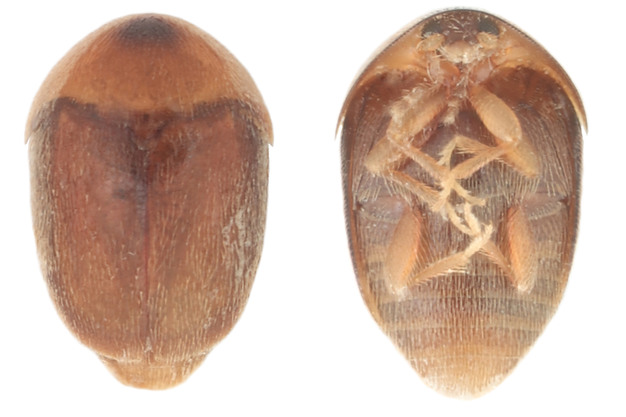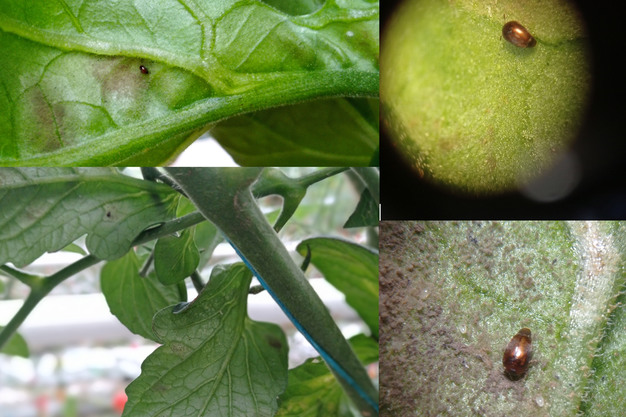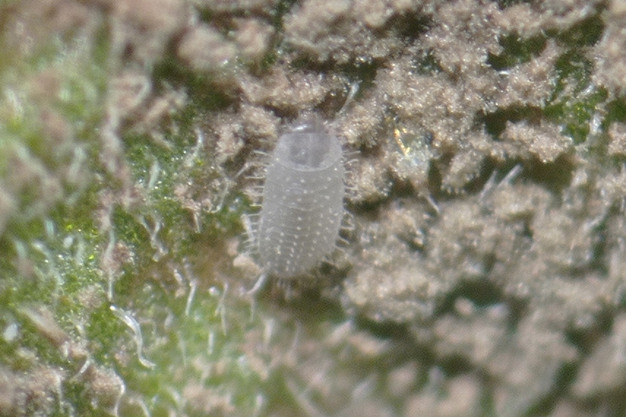In a Czech tomato greenhouse, a tiny beetle with the ability to consume fungus was discovered. Questions arise regarding its efficacy and potential as a spore vector, prompting further research. Václav Psota with Farma Bezdínek talks about the findings, and the possibilities for integrated crop protection.
 Adult of Sericoderus lateralis
Adult of Sericoderus lateralis
“Two years ago, a very tiny beetle was discovered in our tomato crop”, says Václav with the Czech greenhouse company Farma Bezdínek. “We observed adults in the mycelium of Cladosporium fulvum (tomato leaf mold). Following the observation demonstrated the beetle ability to consume Cladosporium fulvum tissues.”
The taxonomic identification was done by associate professor Jan Bezděk, an entomologist from Mendel University in Brno, and resulted in species of Sericoderus lateralis.
“Such discovery triggered our interest in this beetle. Later we were observing its presence in powdery mildew in cucumber greenhouse crop as well”, Václav continues.
As S. lateralis beetle prefers humid decaying substrate quite a large population is often found beneath the gutter, on the ground, in the leaf/plant residues. Once the crop is attacked by fungus such as leaf mold or powdery mildew the S. lateralis adults migrate to plants. They are consuming tissues of fungi as well as laying their eggs in fungal lesions.
 S. lateralis adult occurring in the tomato leaf mold lesion
S. lateralis adult occurring in the tomato leaf mold lesion
 Larva of S. lateralis in tomato leaf mold lesion under the microscope.
Larva of S. lateralis in tomato leaf mold lesion under the microscope.
As these observations revealed that S. lateralis exhibited an affinity for areas infested with tomato leaf mold, often seen actively feeding on the fungal growth, and laboratory experiments confirmed the beetle’s consumption of Cladosporium fulvum, a potential role in biological control is put on the table.
“The main question is if mycophagy behavior of this beetle species can be somehow used in biological pest control of greenhouse crop fungal diseases,” Václav says. Liam Harvey from Biobest IPS team also outlined the question if this beetle species can be a potential vector of spores, either directly on its body or via its frass.
Both questions emerging from this discovery have to be answered by further research. “But growers may also pay some attention to whether this tiny beetle is also present in their greenhouse.”
Growers are advised to monitor for its presence. For more details, refer to the recently published paper in the Journal of Plant Protection Research by Václav Psota from Farma Bezdínek, Czechia.
For more information:
Václav Psota
Farma Bezdínek
Czechia
[email protected]